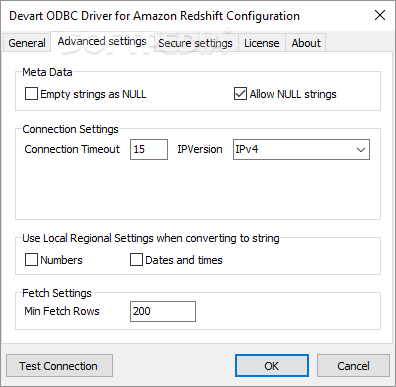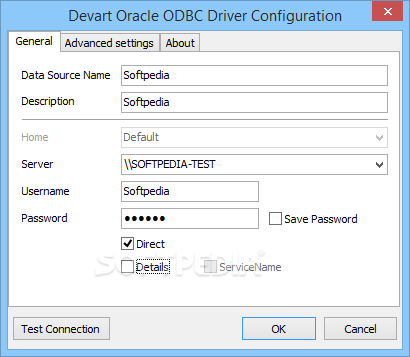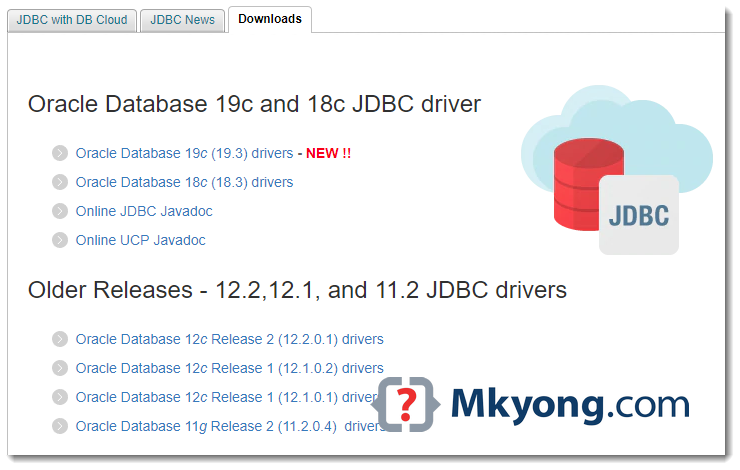Download Oracle 11g Release 2 Client ODBC Drivers The setup differs between 64-bit and 32-bit windows. At the download pages there is a requirement to accept the OTN license agreement. At the top of the page, click the 'Accept License Agreement' radio before clicking download. This article describes an issue that occurs when you use Microsoft ODBC or OLE DB Driver for Oracle or Microsoft Distributed Transaction Coordinator (DTC) to connect to Oracle database in Windows 8.1, Windows Server 2012 R2, Windows Server 2012, Windows 7 Service Pack 1 (SP1), Windows Server 2008 R2 SP1, Windows Vista Service Pack 2 (SP2), or Windows Server 2008 SP2. The TAR archive contains the latest 12.1.0.1 JDBC Thin driver (ojdbc7.jar and ojdbc6.jar), Universal Connection Pool (ucp.jar), other companion jars, and README that has more information about the contents of the tar file.
Install the database driver. Note: The following steps install the database drivers for an environment running MySQL with a Java Database Connectivity (JDBC) driver for Windows. Download the connector from your database engine's documentation. For more information, see Installing the Required Database Drivers. Under Hortonworks ODBC Driver for Apache Hive, download the driver for Windows (64-bit). For installation instructions, expand the Hortonworks ODBC Driver for Apache Hive (v2.6.1.1) entry and click Documentation under the list of operating systems to open the 'Hortonworks Hive ODBC Driver User Guide.' Follow the instructions for the Windows driver.
This document describes the installation process for the Oracle 12c Client software. The University of Wisconsin-Madison doesn't require any particular version installation of the Oracle client, but for best compatibility, it is recommended users install the 12c client. It is NOT recommended users running the Oracle 11g client update to 12c unless they are experiencing technical issues with the 11g client.
Oracle Driver Download Windows 10

Downloading the Oracle 12c Client
Navigate to the Oracle Database downloads page.
Scroll down to the client options and click the download link for your appropriate OS.
Note: 32-bit Windows applications will not work with Oracle's 64-bit ODBC driver. Therefore, users of 64-bit versions of Windows may need to install the 32-bit version of the Oracle Client if they intend to make ODBC connections with 32-bit applications. For instance, if you are running 64-bit Windows 7 but you plan to use a 32-bit copy of MS Access to connect to EPM, you should install the 32-bit version of the Oracle Client. If you intend to use both 64-bit and 32-bit applications to create ODBC connections, you will need to install both clients.
Accept the 'License Agreement' by checking the box in the popup window.
You will be prompted to sign in with an Oracle account, or to create one (free). Once you have signed in, or created your account and then signed in, you will be asked to download the client. Choose to Save the file to an easily accessible location on your computer's hard drive.
The zip archive containing the client installer is large and may take several minutes to download. Once the download is complete, you can continue to the installation process.
Installing the Oracle 12c Client

Oracle Odbc Driver Download For Windows 10
Locate the zip archive containing the client installer on your computer's hard drive.
Right-click the zip archive and select 'Extract All...'. Windows will decompress the contents of the zip archive into a folder in the same location.
Open the resulting folder called 'Client32' (or 'Client64'.). Double-click on the application labeled 'setup' to launch the installer program.
On the first installer screen choose 'Administrator' as the installation type.
Click 'Next >' on the language selection screen.
Make sure 'Use Windows Built-in Account' is selected, then click 'Next >'..
On the 'Specify Installation Location' screen change the default 'Oracle Base' location to C:app, and Software Location to C:appclientproduct12.2.0client_1. Click 'Next >' to continue with the installation.
The image below does not have the correct install paths. Please follow the install paths above.The installer program will check for prerequisites and initiate the installation process. Once the installation is complete, you will be taken to a summary screen.


Final Setup Instructions
Oracle Odbc Driver Download For Windows 7 32 Bit
- Save UW TNSnames.ora file to the correct location in the Oracle directory: Adding, Edting, or Replacing Your TNSnames.ora File for InfoAccess
- Set up ODBC connection (using either 32 or 64 bit as appropriate): Configuring an ODBC connection to InfoAccess in Windows . It is critical to name the Data Source Name in ODBC as 'UW Data Warehouse' otherwise BA's Access files will give errors when connecting to InfoAccess. Test connection.
- Test in Oracle.
- Oracle Quad 10 Gb or Dual 40 Gb Ethernet Adapter User's Guide
- Document Information
- Using This Documentation
- Understanding the Installation Process
- Understanding the Adapter
- Confirming Specifications and Requirements
- Updating Software and Firmware
- Update the OS (Oracle Solaris)
- Firmware Update Tool Overview
- Related Information
- Use the QCU Tool For Port Mode Configuration
- Related Information
- Installing the Driver
- Installing the Adapter
- Order Additional Hardware
- Cable and Transceiver Overview
- Related Information
- Cable and Transceiver Descriptions
- Related Information
- Cable Cautions
- Related Information
- Install the Adapter
- Install the QSFP+ Transceivers
- Verify the Adapter Installation (Oracle SPARC)
- Verify the Adapter Installation (Oracle Solaris x86)
- Verify the Adapter Installation (Linux)
- Verify the Adapter Installation (Windows)
- Configuring the Network
- Configuring Driver Parameters
- Configuring Jumbo Frames
- Configuring a Link Aggregation
- Configuring VLANs and VXLANs
- Removing the Driver
- Troubleshooting the Adapter (Oracle Solaris)
- Glossary
- Index
